UNDER THE PATRONAGE OF THE PRIME MINISTER AND MINISTER OF FOREIGN AFFAIRS, H.E. SHEIKH MOHAMMED BIN ABDULRAHMAN BIN JASSIM AL THANI
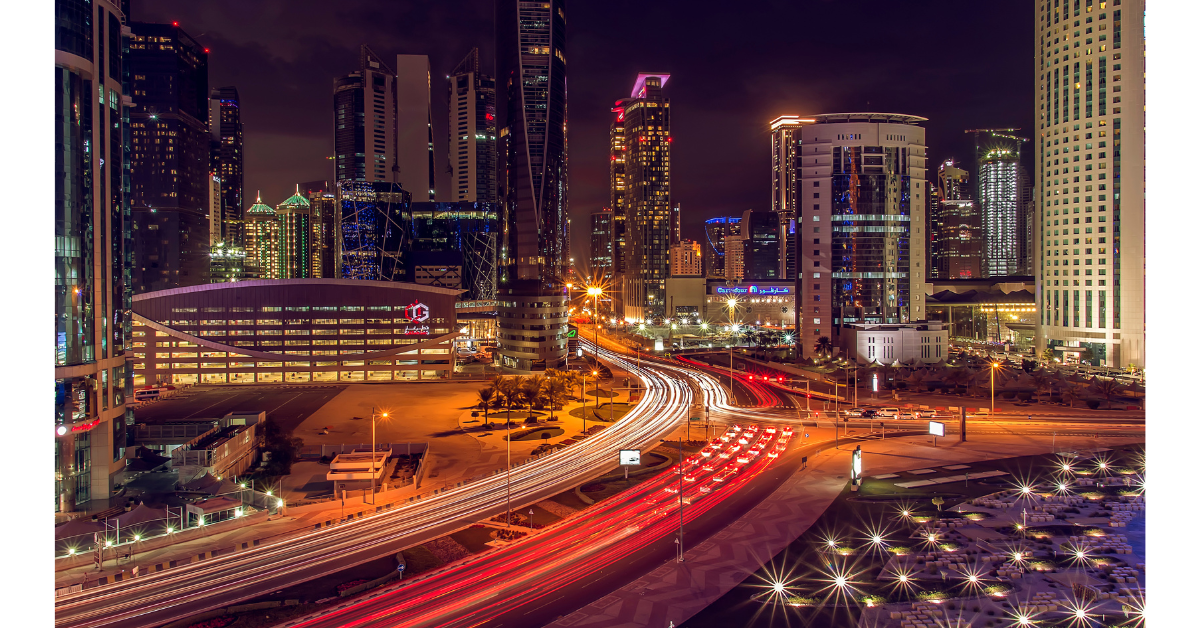
Over a period of 30 months, the project will overhaul the nation’s transportation landscape as it continues to strike a balance between Qatar’s rapid urban growth and its commitment to sustainability.
The QPTMP will bypass conventional frameworks, strategically guiding the evolution of the transit system to address challenges associated with escalating vehicular dependency, congestion, and environmental impact. Designed to serve a diverse audience, including policymakers, government officials, developers, investors, consultants, engineers, and planners, the plan will equip those stakeholders with actionable frameworks and guidelines for effective planning, design, implementation, and operation of public transit services. The plan will also encompass prescriptive policies, laws and regulations, accompanied by a robust monitoring program for integrated and comprehensive solutions.
Dr. Muhammad Mustafa, Regional Director – Mobility and Planning, Egis in the Middle East & South Asia, said, “As global mobility systems evolve in response to urbanization, Qatar stands at the forefront of adaptability, therefore, we are honoured to partner with the Ministry of Transport to craft a transport ecosystem that reflects their vivid ambitions. By uniting visionary leadership with our comprehensive expertise, we aim to create integrated networks that bridge people, places, and possibilities, whilst serving as the backbone of sustainable growth and societal advancement. Our team’s legacy spans the entire lifecycle of transport innovation – from ideation to operational excellence – therefore, we are more than ready to deliver transport infrastructure solutions rooted in precision and scalability.”
The QPTMP’s ripple effects will have far-reaching societal and environmental benefits, supporting healthier lifestyles, fostering economic vitality, and mitigating the ecological footprint of urban expansion through reducing carbon emissions utilizing smarter transit solutions and rubber-stamping Qatar’s commitment to sustainability.
Source: Construction Week Middle East
Qatar’s Public Works Authority (Ashghal) has launched its most ambitious five-year plan to date, unveiling infrastructure investments worth over QR81 billion ($22.2 billion). Spanning the period from 2025 to 2029, the programme covers a wide array of sectors, from urban infrastructure and government buildings to advanced sewage systems and sustainable water management.
Engineer Mohammed bin Abdulaziz Al Meer, President of Ashghal, described the plan as the largest in the authority’s history, both in terms of investment volume and the number of projects.
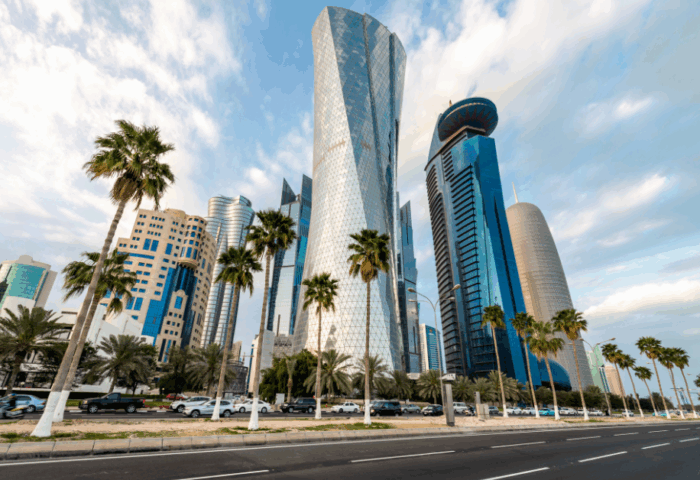
Transforming Public Infrastructure
A key focus of the plan is the development of integrated infrastructure designed to enhance the urban environment and quality of life.
This includes the construction of government buildings that will support vital sectors such as healthcare, education, sports, and culture. The design approach is informed by the ‘humanisation of cities’ concept, aiming to make urban spaces more liveable and community-oriented.
Tackling Flooding and Water Reuse
The programme also addresses pressing environmental challenges through the implementation of cutting-edge sewage and rainwater drainage systems. These include the development of strategic tunnels, pumping stations, treatment facilities, and home connections.
One of the flagship projects is a large-scale sustainable rainwater drainage system in northern and southern Doha. Planned in coordination with the Ministry of Municipality and the Ministry of Environment and Climate Change, the project will be executed in two phases—main tunnelling works beginning this year, followed by sub-tunnelling in early 2026. Treated rainwater will be repurposed for irrigation and cooling applications.
Empowering the Private Sector Through PPPs
To enhance private sector involvement, Ashghal is rolling out several projects under the public-private partnership (PPP) model. Chief among them is the infrastructure development for over 5,500 residential plots. These works include internal road networks, sewage systems, treated water infrastructure, landscaping, and street lighting.
Additionally, the second phase of the wastewater treatment plant in Al Wakra and Al Wukair is being considered for tender under a PPP framework.
Stimulating Growth in the Contracting Sector
Recognising the importance of the contracting sector to national development, Ashghal has committed QR21 billion in financial and regulatory support.
This includes direct payments, burden-relief measures, extended contract durations, and new rules allowing bank guarantees in place of maintenance reserves. The measures aim to help companies recover from the impacts of the Covid-19 pandemic and stabilise the market.
Boosting Local Content and Economic Self-Reliance
Progress has also been reported in Ashghal’s local value programme (ICV), which seeks to increase reliance on local suppliers.
Since 2022, the number of registered local companies has risen from 201 to 733. The share of contracts awarded to local suppliers has surged from 10% to 77%, while non-renewal rates for certification have dropped from 47% to 11%. ICV scoring has soared from 3,024 to over 23,447 points.
Driving Digital Innovation
To improve operational efficiency, Ashghal has introduced a digital initiative to automate financial data submissions by service providers. This centralised database reduces administrative burdens, accelerates tendering, and enables real-time monitoring of contractor performance.
Looking ahead, Ashghal is also advancing its ‘smart contracts’ initiative. By integrating digital technologies into contract management, the authority aims to enhance transparency, cut costs, and reduce manual intervention—aligning with Qatar’s broader vision of innovation and sustainability.
In line with its evolving strategy, Ashghal will soon unveil a refreshed corporate identity reflecting its long-term goals under the 2024–2030 corporate strategy. This transformation aligns with Qatar’s Third National Development Strategy and its overarching National Vision 2030.
Source: MEP Middle East
Qatar's construction sector is experiencing an unprecedented growth phase, as government-led infrastructure projects, private sector investments, and large-scale developments continue to fuel its expansion.
With ambitious construction projects and increasing demand for infrastructure development, Qatar's construction market is projected to surpass $69 billion by 2025, signaling a promising outlook for the nation's economy and positioning it as a major player in global infrastructure development.
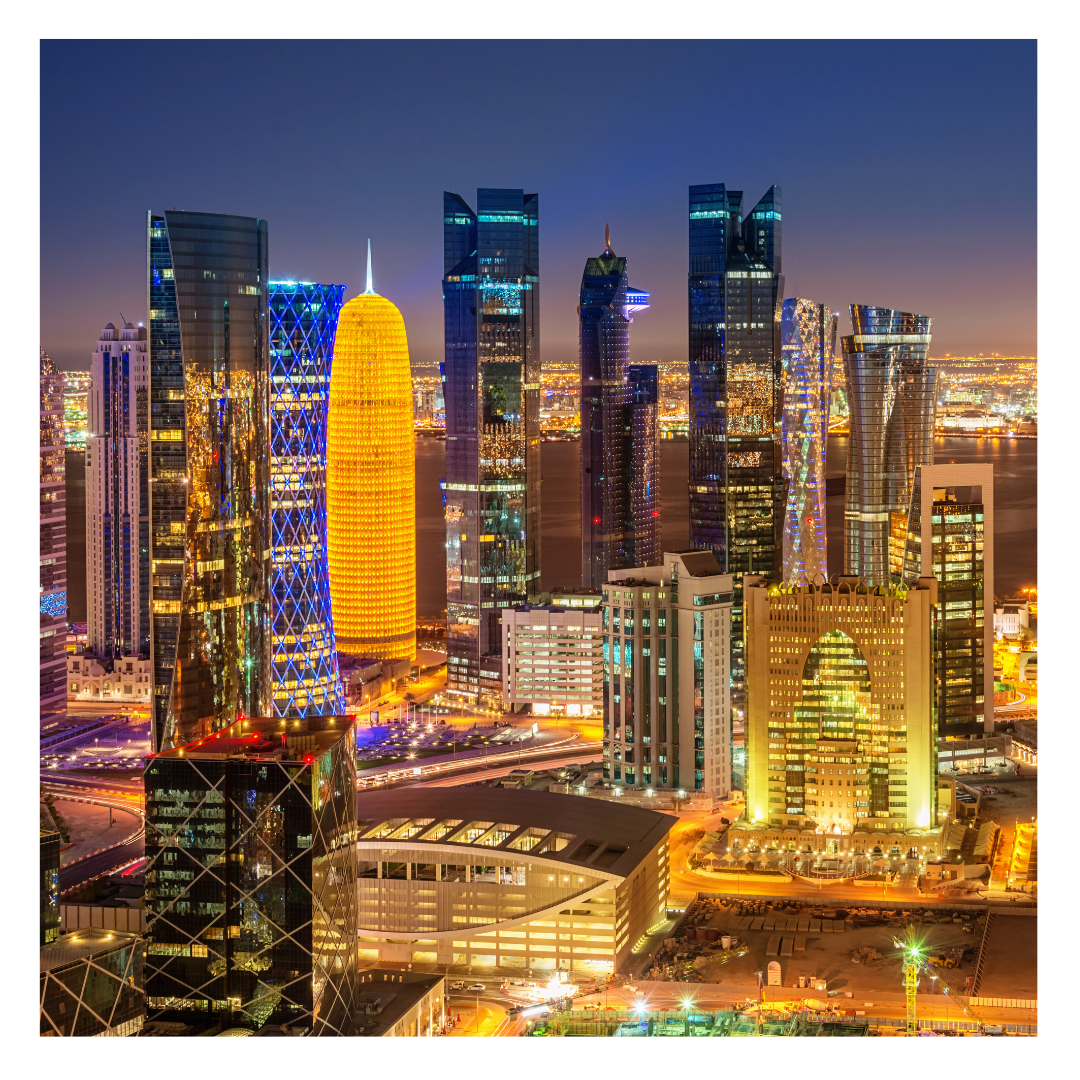
Projected Growth in Qatar's Construction Sector: $69 Billion by 2025: According to Mordor Intelligence, Qatar's construction market is anticipated to reach $68.7 billion (QR 250.64 billion) in 2025, with growth continuing into the next decade.
Projections suggest that by 2030, the market will grow to approximately $106.33 billion (QR 387.92 billion), reflecting a compound annual growth rate (CAGR) of 9.13 percent from 2025 through 2030. This growth is a direct result of strategic planning, government spending, and investments in both infrastructure and sustainable development.
Government’s Role in Infrastructure Expansion: Qatar's construction growth is underpinned by its government's ambitious infrastructure goals, which align with the National Vision 2030. Since hosting the FIFA World Cup 2022, Qatar has accelerated its development plans, with a clear focus on building a diversified economy supported by robust infrastructure.
The Third National Development Strategy (NDS3) has laid out a roadmap for socio-economic development that includes projects across transportation, urban development, and industrial sectors. As a result, government spending on infrastructure projects is expected to be a major contributor to the construction market's growth. The 2025 national budget has allocated QR 197 billion for new projects, including road construction, metro systems, airports, hospitals, and educational facilities. These investments are designed to attract both domestic and foreign private sector investment.
Source: CEO Today
Doha, Qatar, 6 October 2024: Qatar's construction industry is on the brink of significant expansion, with forecasts predicting a $123.1 billion surge by 2030, driven by 9.5% CAGR and robust government investments (Source: QNB Daily Market Report). In this dynamic economic environment, Big 5 Construct Qatar and INDEX Design Qatar are making a much-anticipated return to Doha, offering a premier platform that brings together construction, architecture and design professionals.

The events take place under the Patronage of The Prime Minister and Minister of Foreign Affairs, His Excellency Sheikh Mohammed Bin Abdulrahman Bin Jassim Al Thani. Scheduled from 13 - 15 October at Doha Exhibition & Convention Centre (DECC), Big 5 Construct Qatar will connect over 10,000 industry professionals with manufacturers, suppliers and service providers, presenting opportunities for both local and international stakeholders to explore new business avenues in this flourishing market.
dmg events, a leading organizer of face-to-face events, has teamed up with Qatar-based NeXTfairs to co-host the events alongside Cityscape Qatar. Together the events provide attendees with the resources necessary to bring projects from concept to completion, covering the full construction, real estate and design value chain.
Muhammed Kazi, Senior Vice President - Construction at dmg events, said: "As Qatar's construction industry rapidly expands, driven by Vision 2030 and substantial infrastructure investments, this event provides a unique platform to showcase and explore cutting-edge
technologies and solutions. We invite construction, design and engineering professionals to join us in Doha and seize the opportunities within Qatar's construction sector.”
Rawad Sleem, Co-Founder and General Manager of NeXTfairs, said: “This event is a vital platform for collaboration and innovation in the construction industry, supported by the esteemed patronage of His Excellency, the Prime Minister and Minister of Foreign Affairs, Sheikh Mohammed Bin Abdulrahman Bin Jassim Al Thani, and we are highly appreciative and thankful for the patronage and support of His Excellency. His consistent support is evidence of the ongoing impact that the event has had in strengthening industry recovery and growth. We are also grateful to key supporters like Ministry of Commerce and Industry and Visit Qatar, Ashghal Public Works Authority, QNB and Qatar Development Bank for their invaluable contributions. As Qatar's construction sector evolves with significant infrastructure investments, this event provides a unique opportunity for professionals to connect, share insights, and explore the latest technologies, fostering a spirit of collaboration to advance the industry.”
Convening regional and international brands at Big 5 Construct Qatar
 At Big 5 Construct Qatar, visitors can explore a comprehensive range of products, services, solutions and systems, including concrete and cement, construction tools and PPE, marble and stone and modular construction. The exhibition will also spotlight HVAC and refrigeration systems, MEP services, windows, doors and building envelopes.
At Big 5 Construct Qatar, visitors can explore a comprehensive range of products, services, solutions and systems, including concrete and cement, construction tools and PPE, marble and stone and modular construction. The exhibition will also spotlight HVAC and refrigeration systems, MEP services, windows, doors and building envelopes.
Big 5 Construct Qatar will feature country pavilions from China, Egypt, Italy and Türkiye, along with participation from a diverse range of nations, including Bahrain, Finland, France, India, Jordan, Kuwait, Oman, Pakistan, Qatar, Saudi Arabia and others. Exhibitors at the event include HBK Contracting Company, Platinum Sponsor of the event, renowned for developing world-class arenas; Himalaya Steel, providers of premium steel products; Q Terminals, a key player in managing Qatar's import and export operations; and Al Hattab Holding, specialists in engineering and construction materials.
Commenting on their participation, Sheikh Ali Bin Hamad K Al Thani, President, HBK Contracting Company said: “At HBK Contracting Company we are thrilled to be associated with Big 5 Construct Qatar in 2024. Supporting and participating in the exhibition is critical for the group, as we continue to build on our success in the construction and engineering industry, having contributed to the development of some of the large-scale, mega projects in the country.”
In addition to the exhibition, Big 5 Construct Qatar will host a series of CPD-certified Big 5 Talks and INDEX Design Qatar will feature the Design Talks, providing valuable insights on architecture, project management, sustainability and more. Industry leaders will discuss the sector's opportunities and challenges, offering attendees a comprehensive understanding of the evolving landscape.
Index Design Qatar connects the interior design industry
Designers, hotel outfitters, retailers, wholesalers, distributors and fit-out contractors, will discover specialized offerings in various categories at INDEX Design Qatar. These include decorative accessories and lighting, furniture, textiles, outdoor furnishings, sleep products, art, office interiors, flooring solutions, kitchen and bathroom fixtures, building finishes and urban design elements. This comprehensive showcase provides industry buyers with a diverse range of high-quality products and innovative solutions for their projects.
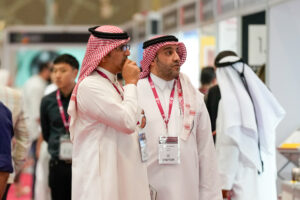 Exhibitors at Index Qatar include Palazzo Morelli, an Italian finishing contractor specializing in surfaces, furniture, and interior design; Vada Stone Design, a leader in stone innovation; Royal Art, known for 3D-printed home décor; Cristellerie De Montbronn, masters of crystal tableware; and Al Rugaib Furniture, a provider of world-class furniture.
Exhibitors at Index Qatar include Palazzo Morelli, an Italian finishing contractor specializing in surfaces, furniture, and interior design; Vada Stone Design, a leader in stone innovation; Royal Art, known for 3D-printed home décor; Cristellerie De Montbronn, masters of crystal tableware; and Al Rugaib Furniture, a provider of world-class furniture.
“This diverse representation of both regional and international companies underscores Big 5 Construct Qatar and INDEX Design Qatar’s commitment to connecting industry professionals with innovations and solutions, driving growth and advancement in Qatar's booming construction, architecture and design sectors,” concluded Kazi.
Big 5 Construct Qatar and Index Design Qatar are supported by Ministry of Commerce and Industry and Visit Qatar; Official Partner, Ashghal Public Works Authority; Official Bank Sponsor, QNB; Development Partner, Qatar Development Bank; Platinum Sponsor, HBK Contracting Company; Gold Sponsor, Al Attiyah Architectural Group Holding and Supporting Association, Lean Construction Institute and CIOB.
Registration is now open with free admission to trade and industry professionals over the age of 18. For more information and to register, visit big5constructionqatar.com and index-qatar.com.
About Big 5 Construct Qatar
Big 5 Construct Qatar is Qatar’s largest construction event bringing together local and international companies to showcase products & services, innovation, expertise and knowledge to the Qatari construction industry. Part of Big 5, the world’s largest and most comprehensive portfolio of construction events, Big 5 Construct Qatar offers visitors an opportunity to connect with 10,000 industry professionals and find the right products & solutions from over 250 international and local exhibitors as well as earn free CPD points through a curated talks programme.
About INDEX Design Qatar
INDEX Design Qatar is a part of the INDEX portfolio of events, the largest being INDEX Dubai, which boasts a 30-year legacy. Tens of thousands of industry professionals attend these events each year to connect with global brands and manufacturers to discover the next big thing in interior design.
About dmg events
dmg events is a leading organizer of face-to-face events and publisher of trade magazines and information services. Our aim is to create dynamic marketplaces to connect businesses with the right communities to accelerate their growth in today’s rapidly evolving landscape. With a presence in over 25 countries and organizing more than 80 events each year, dmg events is a global leader in the industry. Attracting over 425,000 attendees and delegates annually, we organize events in the construction, hospitality, interiors & design, energy, coatings, entertainment, and transportation sectors.
To better serve our customers, dmg events has offices in 10 countries, including Saudi Arabia, the UAE, Egypt, South Africa, the UK, Canada, and Singapore. By being on the ground, we can better understand market needs and nurture relationships to create unforgettable experiences for our attendees. Our flagship events include Big 5 Global, The Hotel Show, INDEX, ADIPEC and Gastech. For more information visit www.dmgevents.com. Founded in 1989, dmg events is a wholly owned subsidiary of the Daily Mail and General Trust plc DMGT, www.dmgt.co.uk
About NeXTFairs
NeXTFairs is a versatile event organizer with years of experience in delivering top-tier services. Backed by a team of seasoned professionals, they offer comprehensive event management solutions for B2B and B2C sectors. Their mission is to position Qatar as a premier destination for global conferences, exhibitions, and events. NeXTFairs is dedicated to creating engaging programs that highlight Qatar's potential for world-class business events, earning a reputation for excellence and delivering exceptional value to clients.
For more information:
Nesrine Mansour Kobeissi
Email: nesrinemk@flavorspr.com
Mobile: +974-55623103

Doha, Qatar: Analysts in the country have noted an upswing trajectory growth for the construction sector in Qatar this year. The industry is estimated to surge by 4.40 percent and is expected to amount to QR133.5m in 2024, as per a recent report by Researches and Markets.
Amidst growing challenges in the region, the medium to long-term growth story in Qatar “remains intact”, the report said. However, in the next four quarters leading up to 2025, the construction market will be boosted and grow steadily.
According to the experts, the momentum will further increase in the years ahead, registering a compound annual growth rate (CAGR) of 4.4 percent from 2024 until 2028. Meanwhile, the construction output in Qatar is anticipated to total QR154.2m in the next four years.
The market intelligence report offered an explicit view of Qatar’s opportunities in the building and infrastructure construction sector, which is poised for higher demand.The report further states that the growth dynamics in building and infrastructure construction in addition to construction cost structure analysis by key areas in Qatar look optimistic.
On the other hand, experts state that there is a growing demand for opportunities for investors to explore rising new projects in the country.
However, the residential construction outlook offers a solid market analysis with ongoing developments across the countries as the price value, volume, and number of units grew significantly as compared to 2023.
During its previous edition of the report, researchers believed that the construction residential sector would amount to $12.39bn this year and is expected to total $21.39bn by 2029, signaling a CAGR of 11.45 percent during the period.
Qatar is one of the swiftly growing economies in the region with a high GDP rate, population, and employment opportunities as the governmental regulations are the key driving factor of the sector.
The country is enhancing its infrastructure and industrial projects in line with the national strategy vision and Asian Games 2030, after hosting a spectacular FIFA 2022.
With the rising foreign direct investments, the residential realty sector witnessed a boom in Qatar.
Several reports note that expatriates and foreign businesspersons invested in many real estate projects, including the West Bay Lagoon and The Pearl.
Key realty players in the market contributing towards the enhancing sector and Qatari economy are Al Mana Real Estate, United Development Company, Qatari Diar Real Estate Company, Ezdan Holdings, and Barwa Real Estate Company.
Source Credit: The Peninsula
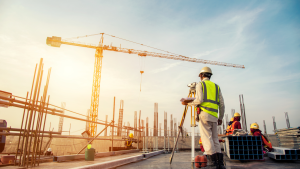
The UAE, Iraq, Qatar and Türkiye, have signed an agreement for a strategic road project that is designed to bolster economic growth and promote regional and international cooperation by fostering economic integration, a report said.
The quadrilateral Memorandum of Understanding for cooperation on the road development project was signed on April 22, in the presence of Iraq's Prime Minister Muhammed S Al Sudani and President of Türkiye Recep Tayyip Erdoğan, Emirates News Agency, WAM, said.
The MOU was signed by Minister of Energy and Infrastructure Suhail Mohamed Al Mazrouei, Iraq's Minister of Transport Razzaq Muhibis, Türkiye’s Abdulkadir Uraloğlu, and Qatar's Minister of Transport, Jassim bin Saif Al Sulaiti.
"The outlines for the framework of implementing the Development Road project aim to stimulate economic growth and enhance regional and international cooperation through economic integration. It seeks to create a sustainable economy bridging East and West, increase international trade, facilitate movement and commerce, establish a new competitive transport route, and bolster regional economic prosperity,” said a statement from the PM Office.
The $17 billion project aims to create a land route and railway extending from Iraq to Turkiye and its ports.The road and the railway within Iraq are 1,200km long for the transport of goods between Europe and the Gulf countries.
The project is expected to be carried out in three phases; the first to be completed in 2028, the second in 2033, and the third in 2050, a Qatar Ministry of Transport statement said.
Source Credit: Trade Arabia
As per the country’s budget announced in 2021, projects worth $14.80bln were identified, while these infrastructure-related projects were expected to be awarded from 2021 to 2023
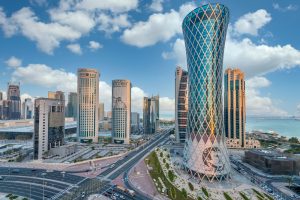
Doha, Qatar: Qatar’s construction sector is anticipated to reach $62.95bn (QR229.19bn) in 2024 and is expected to amount to $97.42bn (QR354.68bn) by 2029, growing at a compound annual growth rate (CAGR) of 9.13 percent during the forecast period.
The report also mentioned that Dentons, a global law firm operating in Qatar listed ‘The Blue Line’, as an expansion of the existing Doha Metro network.
This will be carried out as part of the second phase of the expansion of the Doha Metro Project.
“The second of these projects, the multibillion-dollar Sharq Bridge, will likely construct a three-part bridge with underwater tunnels joining it to connect Katara Cultural Village to Hamad International Airport. Dentons was ranked as the fourth-largest law company in the world by revenue for the fiscal year 2021, with gross sales of $2.9bn (QR10.56bn)”, it reported.
Over the past decade, Doha has swiftly enhanced its infrastructure due to the hosting of global events, making Qatar one of the most sought-after travel hubs in the region.
The major highlights of the well-built infrastructure include cutting-edge highways, stadiums, a metro system, and universities among others.
Analysts at the portal noted that the government’s vital contribution in boosting the construction sector’s growth is the key to global success.
As per the country’s budget announced in 2021, projects worth QR53.9bn ($14.80bn) were identified, while these infrastructure-related projects were expected to be awarded from 2021 to 2023.
However, Qatar’s government aims to develop infrastructure and diversify the economy and has taken initiatives to open economic free zones attracting corporations from across the globe.
The report underscored that “The endorsement of new laws regulating public-private partnerships (PPPs) is expected to attract private sector investment in developing infrastructure, educational institutes, and healthcare projects, hence supporting industry growth during the forecast period.”
It further elucidates that the projects and investments carried out in the transportation sector will also foster growth during the forecast period.
On the other hand, Qatar’s centralises its focus on developing into a more significant global transportation
hub.
“The Qatari government has identified several urgent projects for the medium term, earmarking QR54bn ($15bn) for these. In the second quarter of 2021, spending on major infrastructure projects totaled QR15bn ($4bn), or 20.8 percent of the state’s spending budget,” the report added.
Research and Markets in its latest report underscored that Qatar’s various commitments including hosting the 2022 FIFA World Cup, envisioning National Vision 2030, and its ambition to host the Asian Games in 2030, driving the country towards an impressive array of infrastructure and industrial projects.
Other initiatives such as the 2050 Transport Plan offer Qatar - 22 new projects worth a total of $2.7bn (QR9.83bn), which was announced last year.
Source credit: Zawya
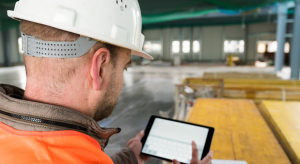
These investments in innovations pay off significantly; research shows that firms that are rated as “digitally savvy” outperform companies by as much as 48% on revenue and 15% on net margin. And this is true across many fields, including AEC.
Research also show that when asked to self-assess, 25% of businesses overate their ability to use data effectively and a whopping 80% of construction businesses are classified as beginner or emerging levels of data capabilities.
There’s never been a more exciting time to be a part of the construction industry. As it continues to change at an accelerated pace, innovations will bring about even more developments and advancements. Here are 10 innovations we believe will shape the future of the industry as we know it today.
1. AI and Machine Learning
Optimized workflows are essential to well-running projects and teams in the AEC industry. However, due to the complexity of construction, workflows have the tendency to be disconnected and manual in nature. The three most significant areas within optimized construction workflows are communication, data, and transparency. AI is making it easier to succeed across all three of these areas, resulting in greater productivity and profits. The fact that Construction Management Association of America (CMAA) proclaimed AI has the potential to increase industry profits by 71% by 2035 doesn’t hurt either.
Machine learning is helping construction pros optimize their workflows and aid decision-making. Predictive analytics is quickly establishing its foothold in the construction industry’s core stack of technology tools. By leveraging current and historical data as well as machine learning, companies can make predictions about future outcomes. These predictions can then be used to make more informed decisions and strategize next moves. Research has also shown that data leaders in construction are 7x more likely to be using AI and machine learning.
Predictive analytics and machine learning are especially valuable in today’s world of complex construction projects and operations. Companies need a precise way to mitigate risks, take advantage of opportunities, and prepare for challenges. This information also gives workers the freedom to focus on higher-value activities that are more likely to move the needle.
BAM Ireland is an excellent example of this benefit. The multinational construction company leveraged Construction IQ, powered by Autodesk AI, as its predictive analytics tool for all projects. Doing so led to a 20% improvement in on-site quality and safety and a 25% increase in time spent on high-risk issues.
Some construction AI innovations are even more subtle. For instance, another tool, AutoSpecs, allows you to find and track submittal items that may not have been added to the specification. The suggested submittals tool compares your current project specifications with historical project data and recommends potentially missing items to enhance accuracy and mitigate risks associated with overlooked details.
2. Resource and Workforce Management Software
Managing resources and a workforce are massive expenses for construction companies. Effective workforce management can help companies keep operations running smoothly, optimize resource allocation, and avoid unexpected expenses as well as delays.
Today, more companies are turning to software platforms to bring more efficiency and actionable analytics to their workforce, whether they be remote, on-site, large, or small.
Construction innovations in workforce management solutions include predictive tracking, forecasting, and mobile-first interfaces. These solutions remove many of the manual processes that come with resource planning.
Bridgit Bench is a workforce planning solution built for contractors to track pursuits, project changes, and forecast workforce needs. Project teams can push awarded and opportunity projects from Autodesk Construction Cloud to Bridgit Bench, keeping projects up to date as changes are made.
One tool, Riskcast provides a way for crews to easily capture labor, equipment, and production plus more, without multiple systems and complex spreadsheets. Teams can sync real-time data into Autodesk Cost Management Performance Tracking to see actuals vs. planned.
Solutions like these allow companies to access metrics and forecasting analytics to better allocate resources to the right projects at the right time. Workforce management solutions are especially important in our current economy, where volatile markets require firms to be as precise and efficient in their operations as possible.
3. The Next Wave of 3D Printing
3D printing has long been cited as one of the top modern construction innovations. However, its future is even brighter these days as the technology moves from a novelty to an emerging industry standard.
With the right implementation strategy—and some creative thinking—3D printing can help speed up projects, make materials more accessible, and enable you to create beautiful designs.
As Stephan Mansour, a 3D Printing & Emerging Technology Advisor at MaRiTama Ltd points out, “Everything can be 3D-printed; it’s just a matter of how far you want to go, how scalable it is, and how much money you’re going to put in.”
In terms of use cases, you can 3D print design elements like facades to make them more intricate and detailed. 3D printing can also be used to print parts, fixtures, and furniture for your building. This is particularly useful when you’re dealing with supply shortages or when you’re working in a remote area. Rather than waiting weeks or months for the materials you need, you can print them within a few hours or days.
We can expect to see 3D printing technologies continue to mature and grow in the future. As companies look for ways to improve quality control, address skilled labor shortages, and explore advanced designs, 3D printing will be here to help them make it a success.
4. AR, VR, and the Metaverse
Extended Reality (XR) serves as the encompassing term for a spectrum of captivating and interactive technologies, including Virtual Reality (VR), Augmented Reality (AR), and Mixed Reality (MR). These transformative experiences are accessible through various devices, ranging from mobile devices to VR headsets. The allure of XR lies in its ability to seamlessly immerse individuals in the digital realm in real-time.
This technology plays a pivotal role in revolutionizing Architectural, Engineering, and Construction (AEC) workflows as highlighted by the announcement of Autodesk Workshop XR, an immersive design review workspace. The evolution of XR is swiftly paving the way for more impactful and efficient work processes. With innovations like Workshop XR, AEC teams are discovering new avenues for issue tracking, error prevention, and enhanced spatial understanding, ultimately improving workflows and integration.
The increasing adoption of XR signifies a paradigm shift in how we approach work, collaboration, and project success. This dynamic environment enables teams to scrutinize and problem-solve within their 3D models in a 1:1 scale, fostering a level of interaction that transcends traditional computer screens.
Businesses—particularly those reliant on cross-departmental collaboration—stand to gain enormous benefits from extended reality solutions. Autodesk Workshop XR, with a connection to Autodesk Construction Cloud through Autodesk Docs, facilitates real-time collaboration within Revit or Navisworks models, making XR a driving force in the AEC industry’s technological wave.
5. Sensor Data
Tracking the various components of your business—including manpower, jobsites, and equipment—is essential. Proper monitoring aids project planning, promotes smoother operations, and ensures compliance with safety and worker regulations.
Here’s the good news: thanks to construction sensors and IoT technology, keeping an eye on the many moving parts of your projects is easier than ever. There are various solutions in the market that can enable you to monitor site conditions, track materials through the supply chain, improve worker safety, and empower better facility management.
Forward-thinking firms are also using sensors to forecast and prepare for future events. “With the use of sensor data and Forge as a software foundation, we are able to predict future product failures,” explains Chris Schoneveld, BIM Manager at Alkondor Hengelo.
“So for a maintenance task, we could analyse the use curve of a building and protect our products against future failures. And doing multiple tasks on a single maintenance job benefits our company’s eco footprint due to a minimization of traffic movement.”
6. Digital Twins
Digital twins is certainly a buzzworthy term, but what benefit does it have for the construction industry? As it sounds, a digital twin is a digital replica of a physical entity, including its potential and current assets, systems, data, processes, workflows, people, and devices. In the context of construction, building out a digital twin from the very start is significant to better understand a physical structure for future operations.
Having a duplicate source of a physical structure allows workers to assess, manipulate, and optimize the building. As they analyze the digital twin, they can uncover potential means of creating efficiencies, developing safety protocols, reducing risks, and improving quality. Digital twins also enhance BIM by serving as a digital thread, connected directly to a physical structure.
Since almost 80% of a building’s lifetime value is realized during operations, the data and insights provided by a digital twin helps owners better maintain their facilities, streamline operations, and improve capital planning.
You can also use digital twins to determine if a built asset is meeting certain KPIs and metrics. “If you have certain sustainable goals, you’ll be able to see if you’re achieving them. If you have equipment and want to measure mean time between failure, having a digital twin helps you do that,” explains Bob Bray, Senior Director & General Manager for Autodesk Tandem.
It can also help owners strategize for the future. As Bob points out, “A digital twin gives you the knowledge to inform, predict, and look at future decisions based on how that asset is performing in the real world.”
Lastly, the advantages of digital twins are especially relevant during times of social distancing, remote work, and travel restrictions. Essential information about a property is readily accessible with a digital twin, avoiding the need to travel or even leave a home office.
Check out Episode 59 of the Digital Builder podcast to learn more about Digital Twins.
7. Truly Connected Construction
Simplicity in construction? It might not be a buzzword, but we’d argue that simplicity is the lifeblood of the most powerful of innovations. When data, workflows, and technology connect, they’re all the more powerful. Apple is a key example of this fact. The same information flows seamlessly between the company’s iPhones, iPads, and MacBooks. These harmonious connections keep things simple and effective.
We see the same concepts play out in connected construction. Construction companies often have to deal with information silos and paper-dependent processes. These challenges are exacerbated by the massive volumes of data and resources that make up the industry. For stakeholders to work efficiently on projects, they need a solid foundation, a single source of truth.
This foundation can be built and maintained with connected construction. Connected construction equates to integrated and connected data, workflows, and technology. It brings information, processes, and people together in one common data environment. It powers effective decision-making, whether they occur during daily operations or as part of a long-term strategic plan. For companies that genuinely want to empower their people to make the most informed decisions possible, connected construction is the answer.
8. Advanced Takeoff and Estimating Tools
The days of relying solely on spreadsheets to put together quantity takeoffs, estimates, and bids, are over. Or at least, they should be. The rise of advanced tools in preconstruction are helping construction pros implement robust bidding and estimating processes so they can focus more on winning more business and reducing risk.
Modern takeoff, estimating, and bidding solutions work in the cloud, enabling you to view and manage bids and estimates from anywhere. These tools also help connect data and teams on one platform, leading to better collaboration and accuracy. And thanks to automation and 3D visualization, you’re able to work faster, produce competitive bids, and ultimately win more work.
Autodesk Takeoff helps contractors easily perform 2D and 3D quantification and ProEst’s estimating solution helps translate project scope into material, labor and equipment costs to generate accurate project estimates. From there, contractors can use BuildingConnected’s bid management solution to choose the right builder for every project from the largest crowd-sourced construction network, reducing risk and protecting the bottom line.
9. BIM Beyond Design
BIM, or building information technology modeling, is widely used in the design world but is often seen as complex and technical outside of it. However, BIM doesn’t have to be complicated. By sharing models between the design department and the field, BIM can be a simple and effective communication tool.
There are many advantages to facilitating BIM access in the field. When models are distributed as PDF documents, valuable BIM data can be lost. By using BIM in the field, teams can improve communication, increase data visibility, and reduce rework costs.
According to John Lim Ji Xiong, Chief Digital Officer, Gamuda Bhd, “In 2024, I think construction industry trends will morph from BIM and 3D modeling to more data-driven topics such as building dashboards, AI, and managing project data. BIM has become something that is mature in the industry and is a requirement in a lot of tenders. However, in the drive to modernize and improve, construction companies will be looking to drive efficiency and transparency through data in order to build better projects.”
Expanding the use of BIM beyond design streamlines communication, provides a richer view of construction documents, promotes safety and reduces rework. By keeping design and field teams aligned through BIM, collaboration improves, and work gets done faster.
Furthermore, new AI innovations open even more opportunities for BIM. “This year, we’ll see greater momentum and interest from the industry as firms leverage AI-driven technologies to automate tedious tasks, more deeply analyze information, and augment decision-making,” says Jim Lynch, Senior Vice President and General Manager, Autodesk. “Particularly, the integration of BIM with AI poses new and exciting opportunities. BIM’s rich data, paired with machine learning, can enable firms to improve efficiency and make smarter decisions beyond just the design phase of a building.”
It’s time to rethink the role of BIM in construction. BIM is not just a design tool every team can use to deliver high-quality work and improve collaboration throughout the construction lifecycle.
10. Robotics
The continued adoption of robotics in construction is another significant development that will shape the industry’s future. However, construction companies face barriers in implementing these technologies including cost of entry and a lack of skills with these specific technologies within teams
On an episode of the Digital Builder podcast, Brooke Gemmell, Emerging Technology Partner at Skanska said, “We’re starting to see so many more robotic applications. I think one thing that may be a misconception is just how readily available they are on projects. Most of the tools out there are only being piloted on a select few projects because we’re still learning how can we really use these and what’s the biggest impact for these tools.”
To overcome these hurdles, companies can start with more mature technologies like drones and offsite prefabrication. They also can invest in training programs and partnerships with technology providers to improve their workforce. Brooke believes there is already a strong appetite from the workforce to do so, “I’ve been on a lot of project sites where we’ve had robotic solutions deployed, and first off, people are really excited about it. They want to learn more and they want to engage.”
Collaboration and communication with technology providers is crucial. By sharing specific needs and challenges, construction companies can shape the development of tailored AI and robotics solutions. It is also beneficial to learn from industry leaders who have effectively incorporated these technologies.
By embracing AI and robotics, construction companies can unlock productivity, efficiency, and safety benefits. These technologies will greatly improve workflow, optimize resource management, and enable faster project delivery.
“Robots are helping people go home earlier, less tired, and with less strain. We’re also taking people out of dangerous situations and using robots in those places,” added Brooke.
Moving Innovation in Construction Forward
The construction industry is truly evolving right in front of our eyes. We’re confident these 10 construction innovations will prove to be especially valuable in the industry today and in the future.
Source Credit: Autodesk
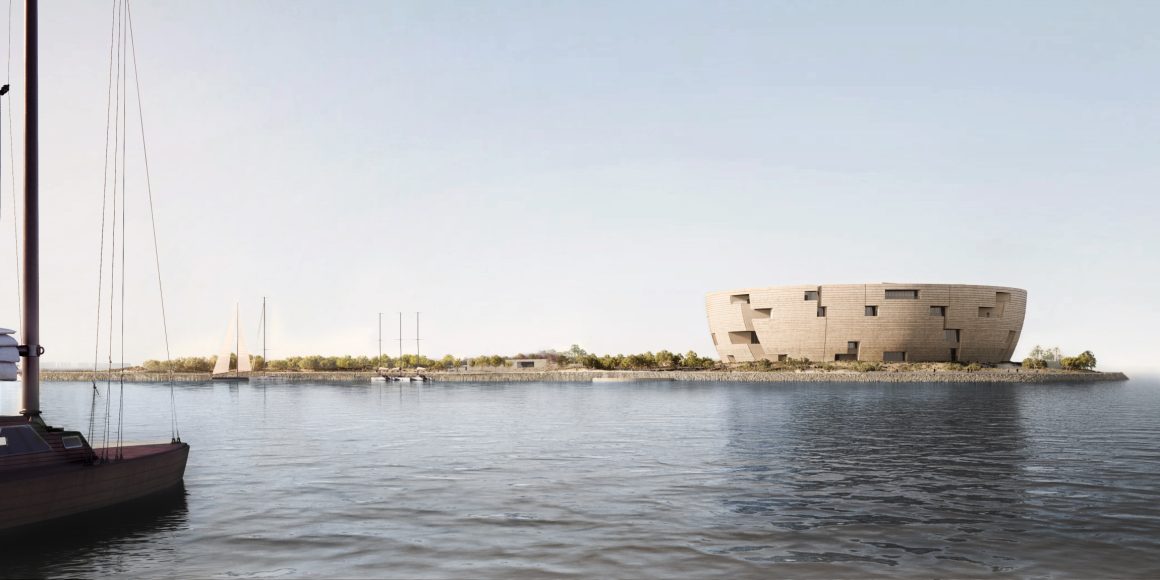
Construction on the new Lusail Museum is expected to commence later this year in Qatar. Located on Al Maha Island in Lusail just north of Doha, the museum will showcase the story of Sheikh Jassim bin Mohamed bin Thani, the founder of Qatar.
According to a CNN report, the museum, promises an architectural marvel with its striking circular design, poised to stand 30 meters tall across five expansive levels.
This structure will span 11,000 square meters, situated on a site vastly exceeding its footprint, and aims to serve as a dynamic space for art exhibitions and global discourse.
Lusail, located approximately 10 miles north of the Qatari capital, Doha, has been under rapid development since 2006.
The city, which hosted the 2022 FIFA World Cup final in the iconic Lusail Stadium, is renowned for its architectural splendours, including the Katara Towers. The completion of the city is anticipated to accommodate up to 200,000 residents. The museum’s design, inspired by Muslim architecture and the natural surroundings, incorporates the crescent shape prevalent in Islamic culture.
Jacques Herzog, the project’s lead architect from the Pritzker Prize-winning Swiss architectural firm Herzog & de Meuron, highlighted the design’s intent to foster a sense of discovery and imagination among visitors.
Herzog & de Meuron, known for their work on the Tate Modern in London and the Beijing National Stadium, aims to integrate the museum seamlessly into Lusail’s landscape and the broader natural elements of sand, rock, and sea.
Source credit: Doha News